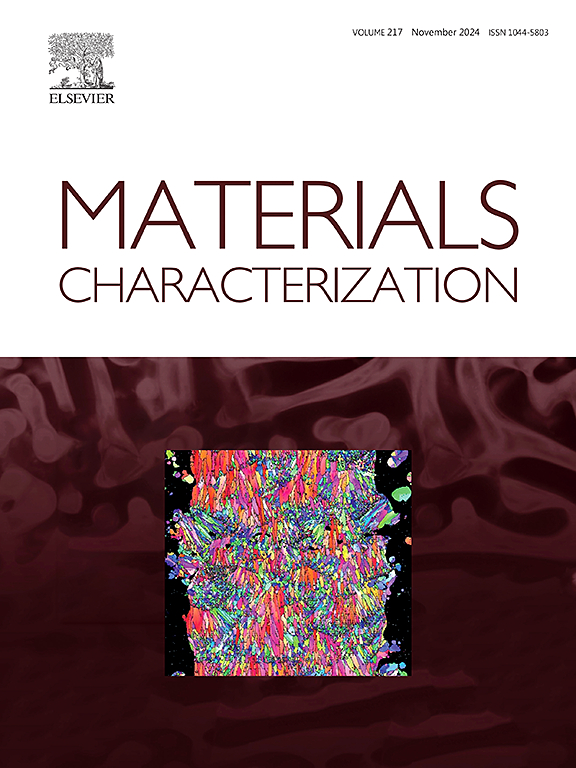Enhancement of interfacial interaction and mechanical properties in aluminum matrix composites reinforced with CuO-coated graphene
IF 4.8
2区 材料科学
Q1 MATERIALS SCIENCE, CHARACTERIZATION & TESTING
引用次数: 0
Abstract
The interface in graphene-reinforced Al-based composites primarily facilitates the transfer of external loads from the matrix to the reinforcement. However, poor interface bonding between graphene and the Al matrix degrades the mechanical properties of the composites. In this work, reduced graphene oxide (rGO)@CuO/Al composites were prepared through surface modification and hot press sintering. The thermal reaction between CuO and Al at the interface promotes the formation of Al2O3 nano-layers on the C-Al interface, thereby enhancing the load transfer capability and the stability of the interface bonding. Additionally, the thermal-induced migration of oxygen atoms aids in the natural formation of Al2O3 inside the crystals. At the interface, the movement of copper atoms leads to a reaction with the Al matrix, resulting in the creation of CuAl2, which inhibits the migration of grain boundaries. When the mass ratio of GO to CuO reaches 1:2, the ultimate tensile strength of the rGO@CuO/Al composite achieves 139 MPa, marking a 53 % improvement over that of the pure Al matrix and 124 % over that of the rGO/Al composite. The enhancement in mechanical properties is primarily attributed to the effective interface load transfer. This strong interface bonding caused by the thermite reaction provides new theoretical support for developing graphene/Al-based composites.
求助全文
约1分钟内获得全文
求助全文
来源期刊

Materials Characterization
工程技术-材料科学:表征与测试
CiteScore
7.60
自引率
8.50%
发文量
746
审稿时长
36 days
期刊介绍:
Materials Characterization features original articles and state-of-the-art reviews on theoretical and practical aspects of the structure and behaviour of materials.
The Journal focuses on all characterization techniques, including all forms of microscopy (light, electron, acoustic, etc.,) and analysis (especially microanalysis and surface analytical techniques). Developments in both this wide range of techniques and their application to the quantification of the microstructure of materials are essential facets of the Journal.
The Journal provides the Materials Scientist/Engineer with up-to-date information on many types of materials with an underlying theme of explaining the behavior of materials using novel approaches. Materials covered by the journal include:
Metals & Alloys
Ceramics
Nanomaterials
Biomedical materials
Optical materials
Composites
Natural Materials.
 求助内容:
求助内容: 应助结果提醒方式:
应助结果提醒方式:


